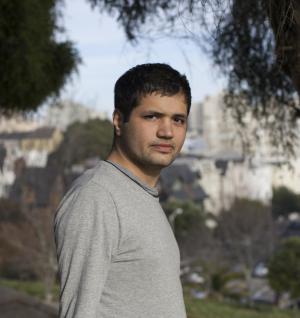Event Date:
Event Date Details:
RSVP here / This event will be conducted via Zoom webinar / Meeting ID: 880 5643 0653 / Passcode: please write to Rachel Feldman for access
Event Location:
- Virtual - Zoom
Event Price:
This event is free and open to all graduate students from any department in the Humanities at UCSB.
Event Contact:
Please write to Rachel Feldman with any questions about this event.
2022 Winter Dissertation & Prospectus Writing Workshop:
"Bahman Mohassess’ Return to Figuration in the 1960s," Mohammadreza Mizaei (Department of History of Art and Architecture)

Join us On Friday, February 18th from 3pm - 4pm PST for this year's first Dissertation and Prospectus Writing Workshop for graduate students from any department in the Humanities at UCSB. The presenter will be Mohammadreza Mirzaei, a doctoral student in the UCSB History of Art and Architecture Department who is writing a dissertation on Bahman Mohassess's painting in the 1960s. His presented chapter, “Bahman Mohassess’ Return to Figuration in the 1960s” examines the historical importance of Mohassess's shift from abstraction to figuration in the postwar period and its contingency to the social realities of Iran. This event will be conducted via Zoom webinar, please write to Rachel Feldman for access.
Abstract: In March 1965, Bahman Mohassess held his first solo exhibition after returning to Iran from Italy at the Iran Gallery in Tehran. This show marked a turning point in Mohassess' career since, unlike the artist's previous (abstract) work, all of the paintings he submitted to the 1965 show were figurative. Since the paintings did not follow the abstract trends of the Tehran art scene and the old figurative currents in Iranian painting, Mohassess was rebuked by the critics and labeled as someone whose work is “outdated” and non-Iranian. Interestingly, such a classification is echoed in the recent histories of Iranian art, as historians characterize Mohassess as a "misfit" or consider the references and implications of his figurative work to be global rather than related to Iran. Unlike these accounts, in this chapter, I examine the historical importance of Mohassess's shift in the pre-1979 Iranian art scene and its contingency to the social realities of Iran in the postwar period. My work provides an analysis of Mohassess's individualism as a tool to resist these/such uniformities. In the context of Iranian painting in the 1960s, with artists' new, powerful conformism to the postwar paradigms of abstraction, I argue that Mohassess demonstrated his own rebellion through his irregular figurative painting. I relate Mohassess's emphasis on individualism and his comments on contemporary art to Jean-François Lyotard's criticism of modernism. Lyotard disagrees with uniformity and how power constructs it. Therefore, for him, individualism is one of the main characteristics of a postmodern society. As discussed in Lyotard's The Postmodern Condition: A Report on Knowledge (1979), different discourses are structured by different rules, or "language games." These rules create the status of knowledge in different societies, and consequently, they define how identity and self-image are represented through such knowledge. Mohassess challenges such rules in the postwar Iranian art scene by not obeying the proposed conventions, such as abstractions or Saqqakhaneh art. Instead, Mohassess represents different language games. He aims to question the reduction of painting to a single system to make the art object "consumable" for the aims of the Shah's regime or Western institutions.


